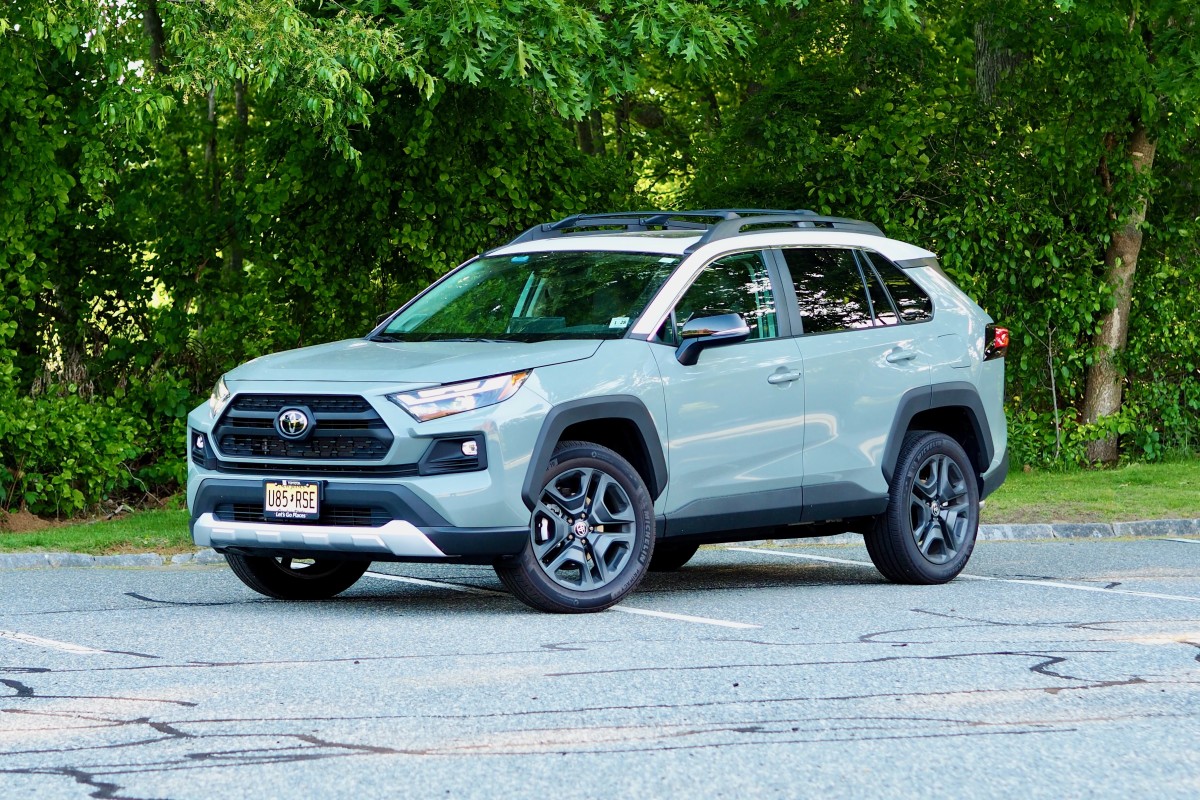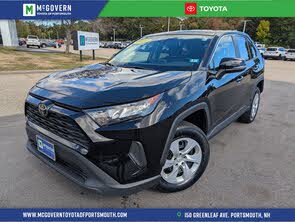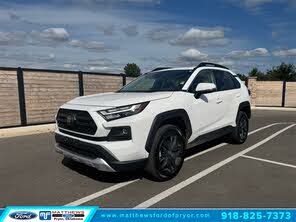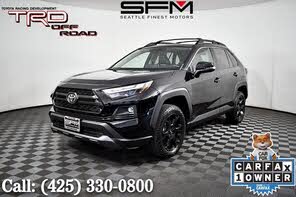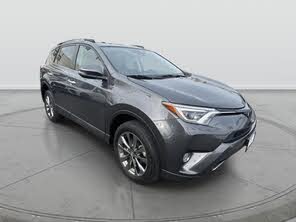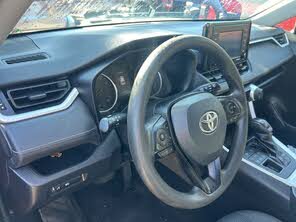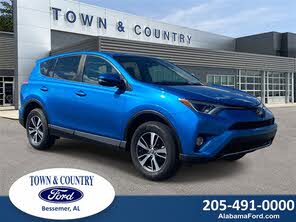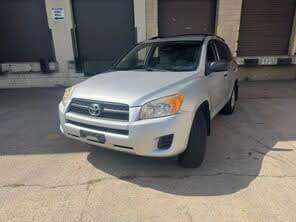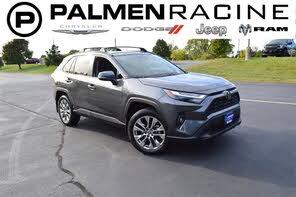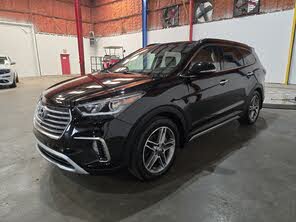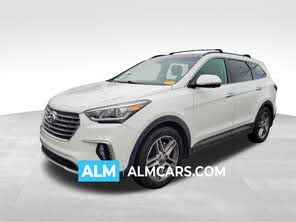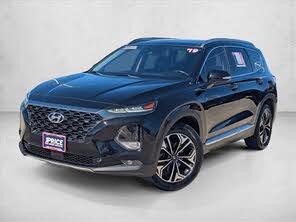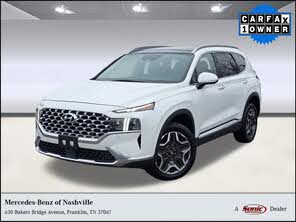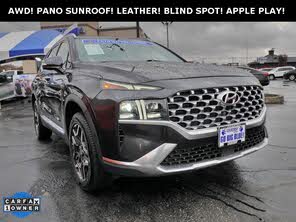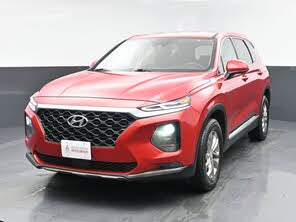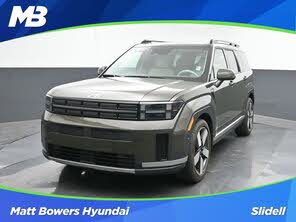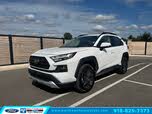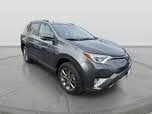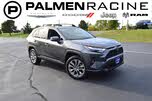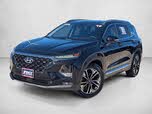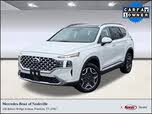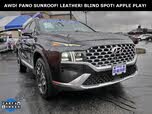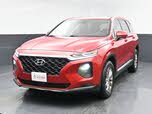Toyota RAV4 vs Hyundai Santa Fe
Overview | |
Years produced2001-Present | Years produced1996-Present |
MSRP$34,200 | MSRP$31,900 |
Listings9560 | Listings9478 |
Ratings & Reviews | |
User Reviews | User Reviews |
Expert reviews7.7 out of 10 | Expert reviews6.8 out of 10 |
Pros
Cons
| Pros
Cons
|
Reviews SummaryMore than twenty years ago Hyundai gave us its first SUV. Called the Santa Fe, the popular crossover has gone through four generations, all leading up to this design departure that makes this latest model the boldest-looking version yet. Even if you’re not sold on the exterior design, the 2025 Hyundai Santa Fe has plenty to recommend it. Its longer wheelbase means the mid-size crossover has more interior space and Hyundai has added myriad features that just make sense in a family vehicle of this size. There are others that might offer up a bit more cargo space, but those who are looking for stand-out styling on the road should take a serious look at this blocky crossover. Verdict: The 2025 Hyundai Santa Fe is a mid-size crossover that fashionable families will love. However, those with more traditional tastes might find it all a bit too much. | |
Reviews SummaryThe sixth-generation Toyota RAV4 now comes with more choice, including three distinct design themes, three powertrain and drivetrain options, and seven trim levels. It has a hybrid drivetrain as standard, offering a claimed 44 mpg combined, along with more standard features, a quicker operating system, and improvements across the board to bolster its bestselling position. Verdict: The good gets better, but the RAV4's lineup is confusing enough to need a Venn diagram. | |
No video found | |
Popular Features & Specs | |
Engine2.5L 277 hp I4 | Engine |
Drive TrainFWD | Drive Train |
Seating Capacity7 | Seating Capacity |
Horsepower277 hp @ 5800 rpm | Horsepower |
MPG City20 | MPG City |
MPG Highway29 | MPG Highway |
Engine | |
Engine Name2.5L 277 hp I4 | Engine Name |
Torque311 lb-ft @ 4000 rpm | Torque |
Horsepower277 hp @ 5800 rpm | Horsepower |
DrivetrainFWD | Drivetrain |
Fuel Economy | |
MPG City20 | MPG City |
MPG Highway29 | MPG Highway |
Interior | |
Seating Capacity7 | Seating Capacity |
Key Features | |
Navigation SystemStandard | Navigation System |
Safety | |
Front Crash Overall4 | Front Crash Overall |
Side Crash Overall5 | Side Crash Overall |
Dimensions & Capacity | |
Cargo Space14.6 cu ft | Cargo Space |
Curb Weight4343 lbs | Curb Weight |
Height67.7 in | Height |
Length190.2 in | Length |
Width74.8 in | Width |
Wheelbase110.8 in | Wheelbase |
Maximum Payload1191 lbs | Maximum Payload |
Number of doors4 | Number of doors |
Maximum Towing Capacity3500 lbs | Maximum Towing Capacity |
Overview | ||
Years produced | 2001-Present | 1996-Present |
MSRP | $34,200 | $31,900 |
Listings | ||
Ratings & Reviews | ||
User reviews | ||
Expert reviews | 7.7 out of 10Read full review | 6.8 out of 10Read full review |
Pros & cons | Pros
Cons
| Pros
Cons
|
Summary | More than twenty years ago Hyundai gave us its first SUV. Called the Santa Fe, the popular crossover has gone through four generations, all leading up to this design departure that makes this latest model the boldest-looking version yet. Even if you’re not sold on the exterior design, the 2025 Hyundai Santa Fe has plenty to recommend it. Its longer wheelbase means the mid-size crossover has more interior space and Hyundai has added myriad features that just make sense in a family vehicle of this size. There are others that might offer up a bit more cargo space, but those who are looking for stand-out styling on the road should take a serious look at this blocky crossover. Verdict: The 2025 Hyundai Santa Fe is a mid-size crossover that fashionable families will love. However, those with more traditional tastes might find it all a bit too much. | The sixth-generation Toyota RAV4 now comes with more choice, including three distinct design themes, three powertrain and drivetrain options, and seven trim levels. It has a hybrid drivetrain as standard, offering a claimed 44 mpg combined, along with more standard features, a quicker operating system, and improvements across the board to bolster its bestselling position. Verdict: The good gets better, but the RAV4's lineup is confusing enough to need a Venn diagram. |
Video | No video found | |
Popular Features & Specs | ||
Engine | 2.5L 277 hp I4 | |
Drive Train | FWD | |
Seating Capacity | 7 | |
Horsepower | 277 hp @ 5800 rpm | |
MPG City | 20 | |
MPG Highway | 29 | |
Engine | ||
Engine Name | 2.5L 277 hp I4 | |
Torque | 311 lb-ft @ 4000 rpm | |
Horsepower | 277 hp @ 5800 rpm | |
Drivetrain | FWD | |
Fuel Economy | ||
MPG City | 20 | |
MPG Highway | 29 | |
Interior | ||
Seating Capacity | 7 | |
Key Features | ||
Navigation System | Standard | |
Safety | ||
Front Crash Overall | 4 | |
Side Crash Overall | 5 | |
Dimensions & Capacity | ||
Cargo Space | 14.6 cu ft | |
Curb Weight | 4343 lbs | |
Height | 67.7 in | |
Length | 190.2 in | |
Width | 74.8 in | |
Wheelbase | 110.8 in | |
Maximum Payload | 1191 lbs | |
Number of doors | 4 | |
Maximum Towing Capacity | 3500 lbs | |

By: CarGurus + AI
At CarGurus, our team of experienced automotive writers remain at the heart of our content operation, conducting hands-on car tests and writing insightful guides that are backed by years of industry experience. To complement this, we are harnessing AI to make our content offering more diverse and more helpful to shoppers than ever. To achieve this, our AI systems are based exclusively on CarGurus content, ratings and data, so that what we produce is both unique to CarGurus, and uniquely helpful to car shoppers.

